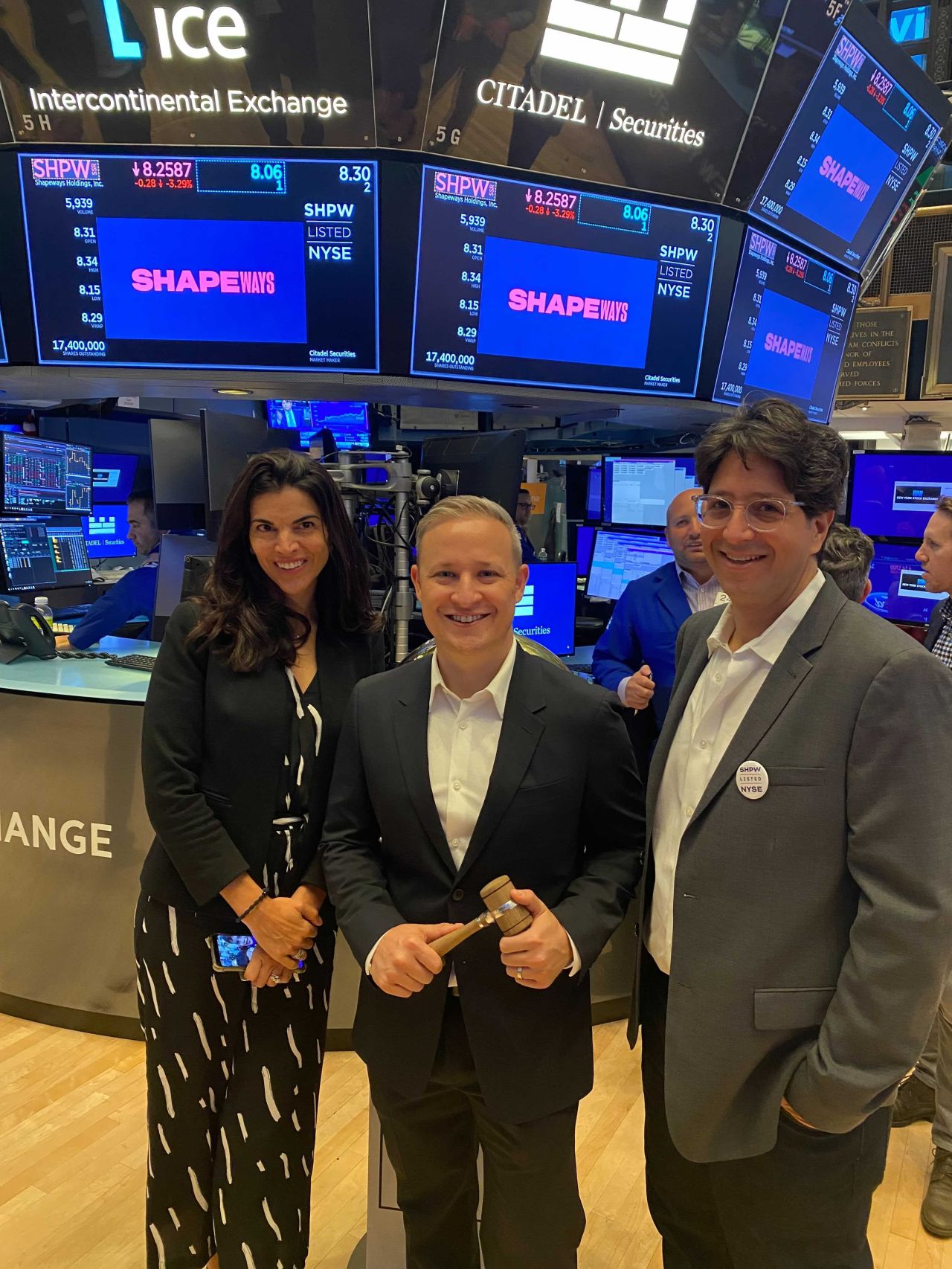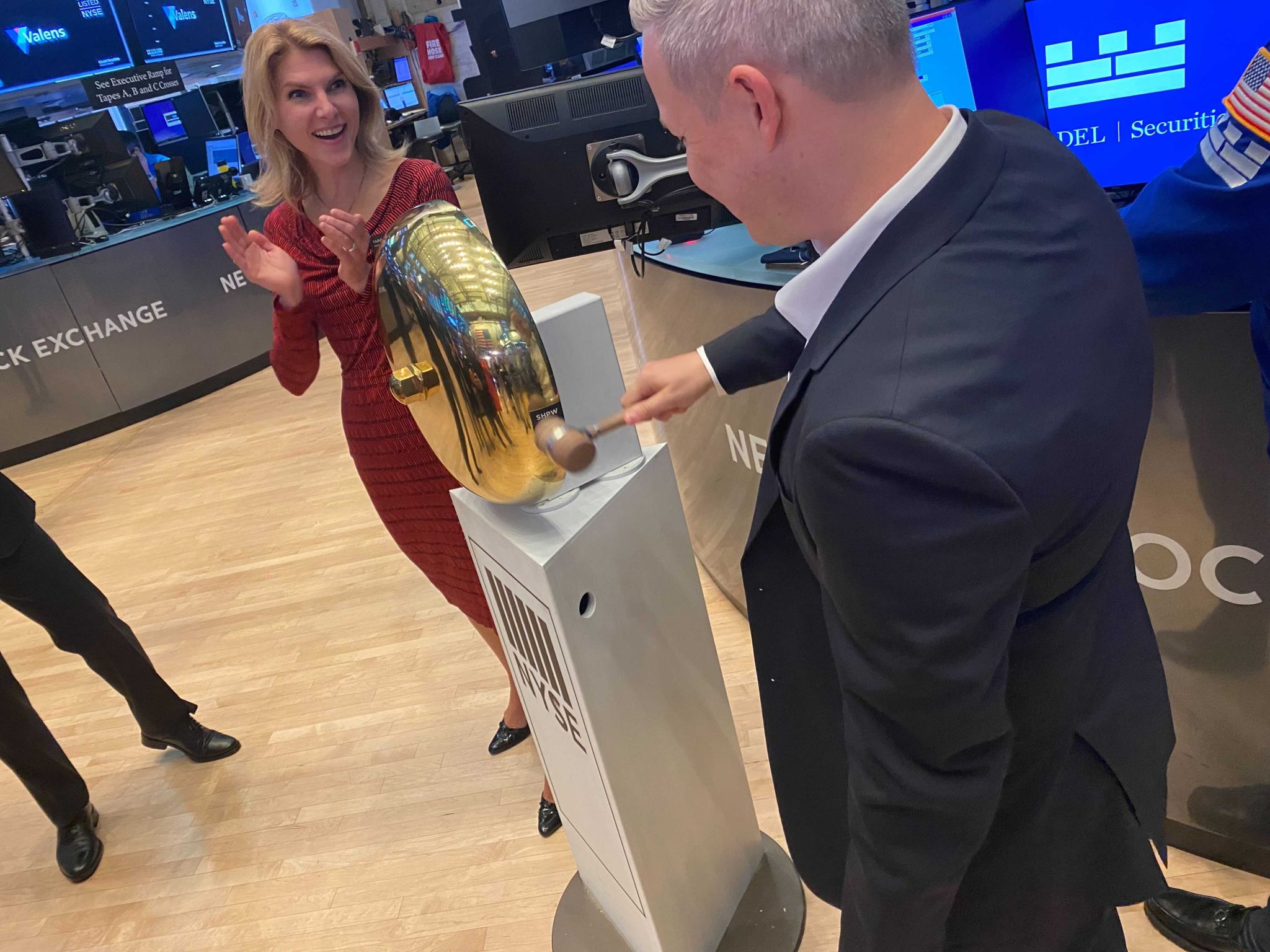Shapeways, the leading 3D printing service bureau that makes digital manufacturing accessible to anyone, has completed its merger deal with blank check company Galileo Acquisition Corp. (NYSE: GLEO) and began trading on the New York Stock Exchange (NYSE) on September 30, 2021, with its common stock and public warrants under the new ticker symbols “SHPW” and “SHPW.WS,” respectively. The Dutch-founded marketplace is the latest 3D printing company to close a SPAC deal this year, following recently listed firms Markforged, Rocket Lab, and Redwire Space, and ahead of the upcoming public listing of Velo3D, Fathom, Bright Machines, and Fast Radius.
Once Shapeways is publicly listed, it will have a valuation of $410 million, and the SPAC deal will add as much as $103 million in cash from the deal, including a $75 million fully-committed common stock private investment in public equity (PIPE) deal anchored by top-tier backers including investment firm Miller Value, insurance expert XN, and 3D printing business Desktop Metal. The company intends to use the funds primarily to scale across materials, markets, and technologies, accelerate the rollout of its software-as-a-service (SaaS) offering to more customers, extend market reach and grow customer share of wallet, as well as provide additional working capital.

Shapeways CEO Greg Kress during the company’s public listing on the NYSE. Image courtesy of Shapeways.
Listing publicly gives Shapeways greater public validation among its customers, especially the Fortune 1000 companies it serves, commented CEO Greg Kress during an interview with 3DPrint.com. The executive said ultimately the decision to go public fit perfectly with Shapeways’ growth strategy, which has increasingly focused on larger customers, businesses, and industrial-grade applications in the last few years. Kress says they still want to support the entire spectrum of its customer base, but emphasized that “if you start to really diagnose our customers, there’s a lot of big businesses and growth opportunities which is why we have been working on new hardware, manufacturing capabilities, and finishes processes related to those types of customers.”
After announcing its intention to go public in April 2021, Shapeways managed to deliver strong year-over-year revenue growth and robust margins as it continues to scale and extend its footprint across key industries. The company saw revenue increase by 26% to $8.8 million in the second quarter of 2021 from $7.0 million in the second quarter of 2020, while gross profit was $4.3 million in the second quarter of the year, up 39% from $3.1 million year-over-year.
Kress sees this as a winning play. “When I joined Shapeways four years ago we made a lot of investment decisions, spent a lot of time improving the fundamentals of our company, invested in software and driving efficiencies, and optimized our manufacturing. If you look at our financials, the company is an incredibly solid place from a fundamental standpoint, so now is the opportunity to get the capital we need and build a strong foundation that will accelerate our key growth initiatives.”

Shapeways CEO Greg Kress rings the NYSE bell during the public listing of the company. Image courtesy of Shapeways.
The company plans to invest the proceeds from the merger deal in additional manufacturing capabilities, supplement the self-service sales strategy with go-to-market resources to help customers adopt AM faster, and deploy its software so companies can digitize their own manufacturing businesses.
For Shapeways, becoming a public company is also an opportunity to grow inorganically through acquisitions. Kress explained that there are plenty of small niche AM players today that are not digitized. These typically have “lower gross margins” and “narrow offerings” but capabilities that would be complementary to Shapeways. Kress said the plan is to acquire startups and digitize them through its proprietary software and drive efficiencies.
As a leading global service bureau, the future of Shapeways is tied to the evolution of the 3D printing industry. Since the service provider has the advantage of being hardware-agnostic, Kress highlights that he wants everyone to succeed and work together towards value creation and technology innovation, making additive an ideal tool for low volume, high mix digitization manufacturing like no other technologies currently available.
“Today, key verticals, like medical, automotive, and aerospace have access to more innovative technology, do things that could never have been done before, with materials that they never had access to, allowing the adoption of digital manufacturing and low volume production. The evolution of additive allows engineers and users to do things like never before, which will fuel tremendous growth in the next decade.”
 Shapeways uses tough SLA plastic materials for 3D printing models, prototypes and patterns. Image courtesy of Shapeways.
Shapeways uses tough SLA plastic materials for 3D printing models, prototypes and patterns. Image courtesy of Shapeways.Described as the Amazon Web Services (AWS) of 3D printing, Shapeways takes hardware out of manufacturing facilities and moves them into the cloud. Moreover, it allows users to get access to a wide range of capabilities overnight as customers can switch between different technologies, materials, and finishes whenever they like, without making a tenure commitment to technology, material, or investment. In addition, Shapeways’ eleven 3D printing processes and more than 90 materials and finishes make it easy to scale innovation and empower digital manufacturing at scale.
“3D printing is disrupting the core manufacturing market and driving serious growth, and by digitizing the end-to-end manufacturing process, we could create trillions of dollars of value. The key then is to digitize manufacturers so they can deliver products to market much faster, improve labor and efficiency through the end-to-end process by using software, and getting higher asset utilization while reducing inventory costs and enhancing automation. There are endless opportunities for all the players in the additive world,” concluded Kress.
Subscribe to Our Email Newsletter
Stay up-to-date on all the latest news from the 3D printing industry and receive information and offers from third party vendors.
You May Also Like
Gorilla Sports GE’s First 3D Printed Titanium Cast
How do you help a gorilla with a broken arm? Sounds like the start of a bad joke a zookeeper might tell, but it’s an actual dilemma recently faced by...
Nylon 3D Printed Parts Made More Functional with Coatings & Colors
Parts 3D printed from polyamide (PA, Nylon) 12 using powder bed fusion (PBF) are a mainstay in the additive manufacturing (AM) industry. While post-finishing processes have improved the porosity of...
$25M to Back Sintavia’s Largest Expansion of Metal 3D Printing Capacity Since 2019
Sintavia, the digital manufacturing company specializing in mission-critical parts for strategic sectors, announced a $25 million investment to increase its production capacity, the largest expansion to its operations since 2019....
Velo3D Initiates Public Offering in a Bid to Strengthen Financial Foundations and Drive Future Growth
Velo3D (NYSE: VLD) has been among a number of publicly traded 3D printing firms that have attempted to weather the current macroeconomic climate. After posting a challenging financial report for 2023,...































